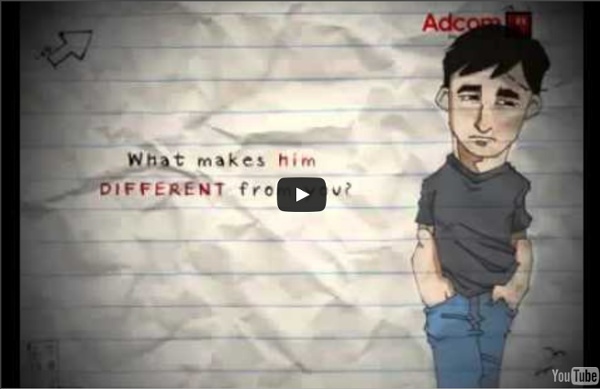



Cymatics: New Music Video for Nigel Stanford Merges Music and Science Experiments With a host of audio-based science experiments from sine waves blasting through streams of water, to visualizations of audio frequencies using sand, and sound waves traveling through flammable gas, this new video by Nigel Stanford has it all. Titled Cymatics, the music video was created for the first single from his new album, Solar Echoes. If you want to learn more about the science, there’s plenty of behind-the-scenes footage with explanation behind each experiment on his Vimeo channel. (via Vimeo Staff Picks) Top 20 TED Talks That Can Improve Your Life Don't Miss Any Tips! Like us on Facebook Close Open TED.com recently released their list of the 20 most-watched TED talks to date, and while they have quite a few of the ones listed that can serve to improve your life, there are several out there that are on the list at deserve some mention. So, we’ve decided to unveil what we believe to be the top 20 TED talks that can improve your life. (Please note: some of these talks are NSFW.) 1. 2. 3. 4. 5. 6. 7. 8. 9. 10. 11. 12. 13. 14. (Editor’s Note: this talk is featured on TED.com’s “Best of the Web” section, but is from his Web 2.0 appearance.) 15. 16. 17. 18. 19. 20. Bonus talk: Did you know that I’ve done a TED talk myself? (Photo credit: Audio Microphone Against Background via Shutterstock) If you enjoyed this article, follow us to get more stuff like this! Get more great stuff like this delivered straight to your inbox Love this article? You may also like The Simplest Ways To Be Highly Creative 186 Shares 256 Shares 145 Shares 183 Shares 270 Shares
What is Innovation? Dr. Stacy Spaulding Towson University | 6 life hacks from my favorite TED talks This week I’ve been revisiting a few of my favorite TED Talks. TED–which stands for technology, entertainment and design–is a non-profit that sponsors conferences around the world focused on “ideas worth sharing.” They recently celebrated one billion TEDTalk views and have partnered with Mashable to create TopTED, which features the favorite talks of celebrities, visionaries and innovators. I’ve got a huge list of favorite journalism and social media talks that I’ll share later. In the meantime, here are a few of my favorite “life hacks.” Abigail Washington on trying new things As the old saying goes, life is what happens while you’re busy making other plans. Shawn Achor on cultivating happiness at work Ninety percent of our long-term happiness is dependent on how our brains process the world. Derek Sivers on how to start a movement Leadership is over glorified, Sivers says. Amy Cuddy on how body language shapes us Changing your posture can change your life. Dr. Dr.
What is "innovation"? What does innovation mean to you? James J. Gibson Un article de Wikipédia, l'encyclopédie libre. Pour les articles homonymes, voir Gibson. James Jerome Gibson (1904-1979) est un psychologue américain ayant joué un rôle primordial dans le domaine de la perception visuelle. Rejetant d'abord le béhaviorisme dans The Perception of the Visual World (La perception du monde visuel, 1950) puis le cognitivisme dans The Ecological Approach to Visual Perception (1979) (Approche écologique de la perception visuelle, tr. fr 2014), il est à l'origine d'une nouvelle approche de la perception (la théorie écologique de la perception), dont la version la plus aboutie est présentée dans ce dernier ouvrage. La psychologie écologique[modifier | modifier le code] Selon Gibson, on ne peut expliquer la perception que dans la relation de l'animal avec son environnement, d'où le nom d'approche écologique. Références[modifier | modifier le code] Bibliographie[modifier | modifier le code] Approche écologique de la perception visuelle (1979), James J.
Affordance Un article de Wikipédia, l'encyclopédie libre. L'affordance est la capacité d’un système ou d'un produit à suggérer sa propre utilisation. Le terme est utilisé dans différents champs, notamment la psychologie cognitive, la psychologie de la perception, la psychologie ergonomique, le design, l'interaction homme-machine et l'intelligence artificielle. Deux grandes voies de définition se sont développées on doit à la psychologie la définition originale de l'affordance : elle désigne « toutes les possibilités d'actions sur un objet ». Le terme d'affordance est emprunté à l’anglais et il est parfois improprement traduit par potentialité. Genèse[modifier | modifier le code] Le terme Affordance apparait pour la première fois dans les écrits du psychologue James J. Cependant c'est le psychologue James J. Affordance trompeuse[modifier | modifier le code] William Gaver[5] propose de classer les affordances en trois catégories : perceptible, dissimulée et trompeuse. Sur les autres projets Wikimedia :
An Unprecedented Opportunity for Educational Equity Access to successful learning for all students is a powerful equalizer that drives superior educational outcomes. The importance of equal access is credited with much of the academic progress in Finland, a country without private schools or standardized tests. "Since the 1980s, the main driver of Finnish education policy has been the idea that every child should have the same opportunity to learn, regardless of family background, income or geographic location. The technological advances of online game-based instruction and the breakthroughs in neuroscience learning research bring us an unprecedented opportunity for achieving this equity and quality education nationally and internationally. More Joyful and Successful Learners Boredom, negativity, apathy and self-doubt have been amplified by the past decade of over-packed curriculum with emphasis on rote memorization and prep for high-stakes testing. Achievement Gap Impact An Equalizing System in Action Impact on Teachers Educational Equity